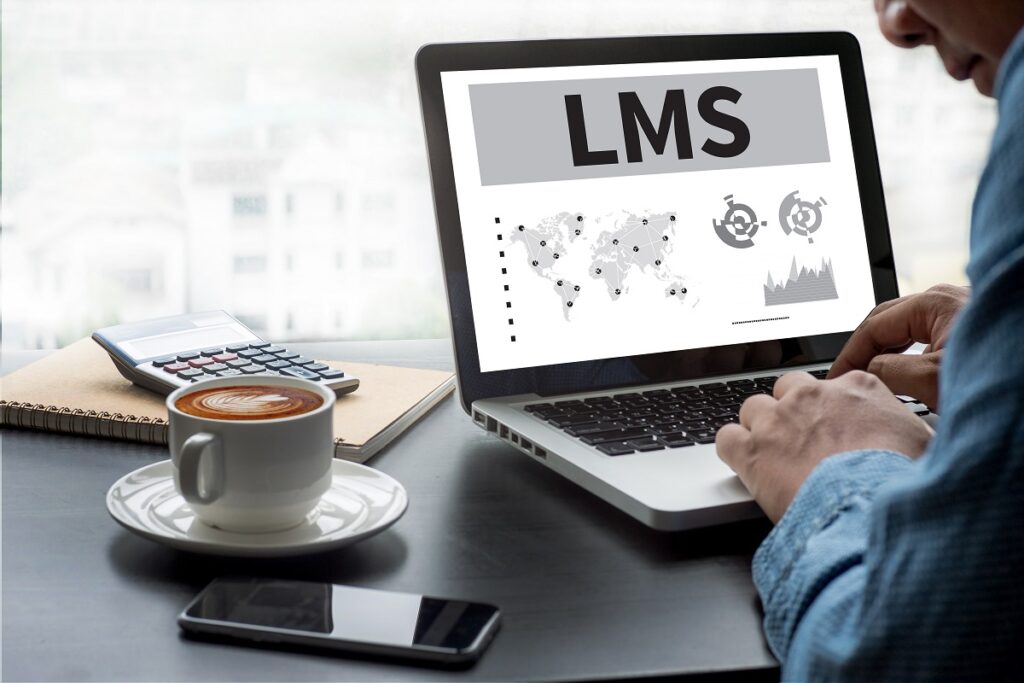Your learning management system is the backbone of your corporate training and development program. This software gives your employees access to everything from orientation to yearly compliance training. Especially now, with social distancing guidelines moving more learning online, your choice of LMS can make or break your program.
The solutions range from ready-made to custom, with varying levels of flexibility in between. Dozens of special features and add-ons make the choice even more complex. But complex doesn’t have to mean overwhelming, as long as you know which factors are important. Here’s what to look for in an LMS for Corporate Learning.
Nine things to consider when choosing an LMS
Selecting the right LMS for corporate learning starts with knowing what you’re looking for. What features matter, and which ones complicate without adding value? Below are nine factors to consider when choosing an LMS.
Make a score sheet for each LMS you consider to help you compare them based on these factors. A scale of one to five can highlight the strengths and weaknesses of each LMS. You might even weight factors depending on your industry and the scope of training you want to provide.
1. Security
A secure system protects learner data, your network, and your firm’s reputation. Look for an LMS that includes the latest security features, such as:
- Advanced authentication – rather than a simple username and password, advanced authentication may use a physical device, biometrics, or challenge questions to check the user’s identity.
- SSL encryption – this extra layer of protection for websites has become an industry standard. Major browsers like Google actually mark non-SSL sites as unsafe. Other encryption protocols can provide additional protection.
- Third-party certificates – don’t just take your LMS vendor’s word that their system is secure. Look for third-party certificates from independent assessment authorities.
These are just a few of the security measures that protect learner data security. Be aware that both your firm and your LMS vendor are subject to data privacy laws protecting your employees and their data. Any LMS you choose should at least meet the minimum requirements under these guidelines.
2. Compliance
If you’re doing any sort of regulated training, you’ll need the tools for the job. Easily accessible and up-to-date records will help you prove compliance in the event of an audit. Look for features like:
- Certification management
- Automatic report generation
- User authentication or identity check
Contact the regulatory bodies within your industry to get a full list of compliance guidelines for training and credentialing.
3. Reporting
Reporting and analytics tools enable you to track employee progress through courses. This shows you both how well courses are working, and whether employees are on track with their learning and development goals. Plus, as mentioned above, reporting tools help you prove compliance in the event of an audit.
Look for robust reporting tools that show completions, progress, and time spent learning. They should include customizable reports with visual representations of data.
4. Intuitive User Interface
Your employees shouldn’t have to spend hours learning how to use the learning management software. That time is much better spent working on their career-specific training or certifications. Ideally, the learner should be able to use the software within minutes. Look for clear navigation, easy-to-access tools, and well-marked learning pathways that guide the learner from module to module.
To test the user interface, request a demo program or sign up for a free trial. Then, invite a few of your employees to use it and report back on the user experience.
5. Mobile Accessibility
One of the most effective ways to encourage learning is by making courses mobile accessible. Research by Google shows that 80% of people often use a smartphone to access the internet and 27% use only a smartphone. If your LMS is only accessible via a desktop (or if the mobile experience is significantly worse than the desktop version) you’re limiting access to training. Choose a mobile-friendly LMS so employees can learn when and where it’s convenient for them.
6. Technical Support Services
Even the most user-friendly LMS can sprout technical issues from time-to-time. If technical support is difficult to access, employees may have to pause their learning. Keep them on pace by choosing an LMS that includes integrated technical support.
The more options they have for accessing tech support, the better. So look for an LMS that includes chat, email, and phone support options.
Of course, learners aren’t the only ones with questions. Look for online customer support, FAQs, and resource centers to help your organization quickly find the information you need to address system-wide concerns.
It’s difficult to tell what customer support will look like before you purchase. You’re probably working with the sales team rather than the customer support staff. Get the real story by reading reviews or talking to other clients of this LMS vendor. Find out what problems they’ve run into and how quickly they were resolved.
7. Customization Options
Some LMSs define customization as the ability to include your logo or branding messages. But customization can go much deeper. Depending on your training goals you may want to customize course content, tweak the user interface, or provide specific supports.
Also, consider how much you want to personalize training for individual employees. If you’re delivering regulated training, there may not be much room for personalization. But employee onboarding or skills development training often works best when personalized.
8. Course creation and integration tools
If you have existing courses, consider whether they will integrate with this new LMS. What happens if you want to create a new course? Are those tools available?
You might want to seek out an LMS that is SCORM compliant. The Shareable Content Objective Reference Model is a common set of technical standards for LMSs and other eLearning products. It specifies how content is packaged, how data should communicate with the LMS, and how the learner can navigate the course. Most importantly, SCORM compliant courses can be ported into any compliant LMS. Which means you won’t end up having to recreate everything from scratch if you have to change LMSs later on.
9. Cost and add-ons
Finally, how much does this LMS cost? Keep in mind that you may be charged a flat fee, per-user, or on a subscription basis. Factor in any add-ons or upgrades you may need. To find the true cost of the LMS consider:
- Monthly or annual fees
- Start up-fees
- Course design or material fees
- Staff costs to manage the LMS
- Maintenance and tech support
Beware Software Bloat
One last thing to consider: beware overly complicated software. When it comes to an LMS more isn’t always better. Tools that you don’t need or aren’t relevant can make the software more complicated to use, more resource intensive, and more maintenance heavy. They can also inflate your costs.
If an LMS comes with dozens of bells and whistles that don’t contribute to the learner experience, it might not be the right solution for you. Focus on the essentials to keep learning lean and accessible.
Finding the perfect blend
Perhaps the best advice is not to focus on the LMS in the first place. Instead, you could look for a learning partner who will help you customize your training plan and tailor a solution to meet your needs.
At Oliver, we offer secure and compliant training solutions that work with your existing systems and programs. We can also create custom solutions to meet your needs. Whether you rely solely on our proprietary learning management system or include it as one tool in your training and development toolbox, we’re here to help. Contact an Oliver training expert today.





